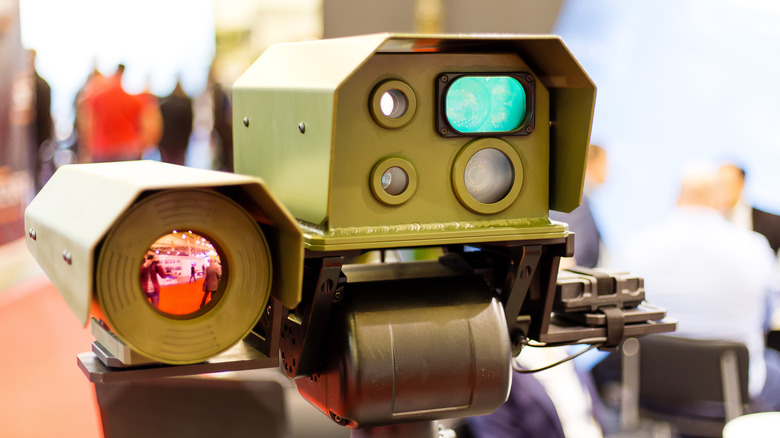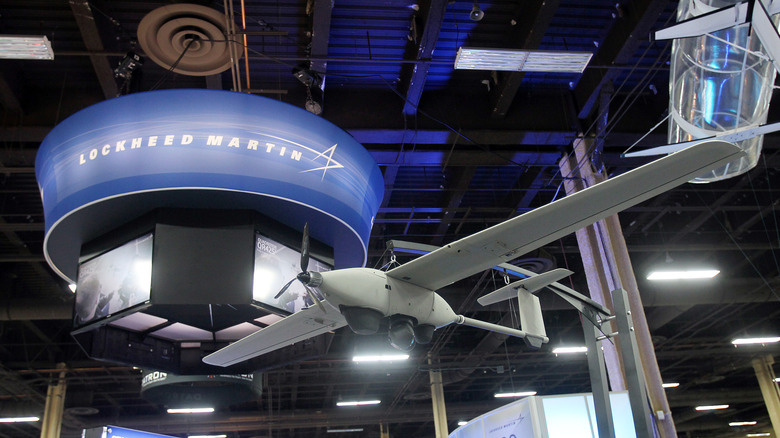What The Military's New 300-KW Laser Has In Common With A Famous Album
Apparently one of the world's leading defense contractors has started taking engineering devices from everybody's sophomore dorm room. Lockheed Martin describes its latest laser-based contribution to the future of combat in terms oddly familiar to anyone who's ever tacked a certain album cover to the wall.
The Wall. See what we did there?
That's right. Per Popular Science, Richard Cordero, vice president of Lockheed, says HELSI — that's High Energy Laser Scaling Initiative to you — bears a striking resemblance to the cover of Pink Floyd's "Dark Side of the Moon." Like the album's iconic prism, the 300-kilowatt laser platform projects multiple beams at once from a single origin point, allowing it to engage several targets at once.
Solutions like HELSI offer flexibility sorely needed in 21st-century warfare. Modern anti-aircraft solutions need to be able to engage bleeding-edge drone technology and at the same time handle saturation attacks by comparatively cheap, simple munitions like bombs and mortars (and this isn't the first time the military has dabbled with laser-centric defensive munitions). Finding anything that can handle both is a serious engineering challenge.
Prog rock protection for the digital generation
"Dark Side of the Moon" might seem like an oddly peaceful analogy for a weapon of war, but it's an apt comparison. HELSI is a subset of the Army's Indirect Fires Protection Capability-High Energy Laser project (IFPC-HEL – the military loves a good acronym), intended to defend fixed and semi-fixed sites like forward bases against various badness from above. To that end, it fires multiple beams from a single point, not unlike the spreading spectrum of the album cover.
As currently conceived, energy weapons like HELSI won't solve attacks by themselves. No matter how good HELSI gets at blasting projectiles out of the air, it can't solve the proximate problem — someone is shooting at it and they need to stop. The IFPC-HEL brief was to build something that could clear the air for a vital pocket of time, giving conventional attackers like ships and artillery a chance to target and neutralize the hostiles in question.
Whether HELSI lives up to IFPC-HEL hopes remains to be seen. As yet, it has not been tested in a live fire environment. That said, HELSI delivers about five times the power Lockheed's earlier Helios laser needed to knock a cruise missile out of the sky. Helios is already defending a U.S. battleship (via TheDrive). If HELSI can match that kind of performance, it's likely to have a place on the battlefields of the future.

